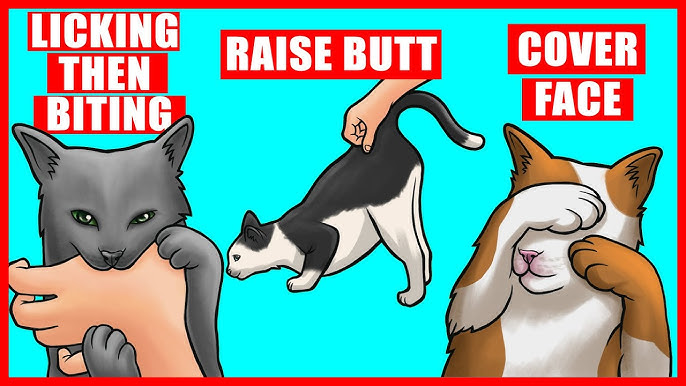
Cat Behaviors and What They Mean to Humans
Cats have been living alongside humans for thousands of years, yet their behaviors can sometimes seem mysterious or even confusing. Unlike dogs, which are often straightforward in their actions, cats communicate in more subtle ways.
Understanding their behaviors can help cat owners strengthen their bond with their feline friends. In this article, we’ll explore common cat behaviors and what they mean for humans.
1. Kneading with Their Paws
One of the most endearing behaviors cats display is kneading—when they push their paws in and out against a soft surface, such as a blanket, pillow, or even a person’s lap.
This action originates from kittenhood when kittens knead their mother’s belly to stimulate milk flow. As adults, cats continue this behavior as a sign of comfort and affection. If your cat kneads you, consider it a compliment—they see you as a source of warmth and security.
2. Purring
Purring is one of the most well-known cat behaviors, but it’s not always a sign of happiness. While cats do purr when they are content, they also purr when they are in pain or stressed.
Scientists believe that the frequency of purring has healing properties, helping cats recover from injuries or illnesses. If your cat is purring while being petted, they’re likely enjoying the attention. However, if they’re purring in an unusual situation, such as at the vet’s office, they might be trying to calm themselves.
3. Slow Blinking
Cats communicate through their eyes, and a slow blink is their way of showing trust and affection. If your cat looks at you and slowly closes and opens their eyes, it’s often referred to as a “cat kiss.” You can return the gesture by blinking slowly back at them, which helps build a stronger bond between you and your feline friend.
4. Bringing You “Gifts”
If your cat brings you a dead mouse, bird, or even a toy, they are displaying a natural hunting instinct. In the wild, mother cats teach their kittens to hunt by bringing them prey.
If your cat presents you with a “gift,” they may be trying to provide for you as they would a family member. Though it might not be pleasant, this behavior is a sign of love and trust.
5. Tail Positions and Movements
A cat’s tail can reveal a lot about their mood:
- Straight up with a slight curve at the tip – A friendly greeting and sign of happiness.
- Puffed-up tail – Indicates fear or aggression.
- Twitching or flicking tail – Shows irritation or excitement.
- Tucked tail – A sign of anxiety or submission. Observing your cat’s tail can help you understand their emotions and respond accordingly.
6. Head Bumping and Rubbing
Cats have scent glands on their head, cheeks, and chin. When they rub their head against you, they are marking you with their scent, essentially claiming you as part of their territory. This behavior, called “bunting,” is a sign of affection and trust. It’s their way of saying, “You’re mine, and I feel safe with you.”
7. Hiding or Avoiding Interaction
Some cats are more social than others, but if your normally friendly cat suddenly starts hiding, it could be a sign of stress, illness, or fear. Sudden changes in behavior should be taken seriously. If your cat is acting unusually withdrawn, it’s a good idea to consult a veterinarian.
If you’re looking for experienced veterinarians in Charlottesville, VA, professionals can help determine if your cat’s behavior is due to health concerns.
8. Meowing
Cats use vocalizations to communicate with humans more than with other cats. Different meows can have different meanings:
- Short meows – A greeting or acknowledgment.
- Long, drawn-out meows – A demand for attention or food.
- Repeated meowing – A sign of excitement or insistence.
- Yowling – May indicate distress, mating behavior, or even illness. If your cat suddenly starts meowing excessively, it may be a sign that something is wrong. A visit to a trusted Crozet animal clinic can help rule out any medical issues.
9. Scratching
Scratching is a natural and necessary behavior for cats. It helps them shed the outer layers of their claws, mark their territory, and stretch their muscles. Providing scratching posts and pads can help protect your furniture. If your cat is scratching excessively or destructively, it may be due to stress or boredom.
10. Licking and Grooming
Cats are known for their grooming habits. When a cat licks you, they may be showing affection or marking you as part of their group. However, excessive licking can indicate stress, allergies, or skin issues. If you notice over-grooming, seeking advice from an Ivy veterinary professional can help address the issue.
11. Belly Exposure
When a cat rolls onto their back and exposes their belly, it can mean trust, but it’s not always an invitation for belly rubs. Unlike dogs, many cats dislike having their stomachs touched. If your cat exposes their belly, they feel safe around you, but always read their body language before petting them.
12. Chattering or Chirping
If your cat watches birds from a window and makes a chattering or chirping noise, they might be expressing excitement or frustration. Some experts believe this behavior mimics the motion they would use when catching prey, while others think it’s a way to communicate their eagerness.
Final Thoughts
Cats may seem independent, but they rely on their human companions to understand their needs and emotions. By paying attention to their behaviors, you can build a stronger relationship with your feline friend and ensure their well-being.
If you ever notice sudden or concerning behavioral changes, consulting a veterinarian is always a good idea. With proper care, patience, and love, your cat will thrive in your home and continue to bring joy to your life.





